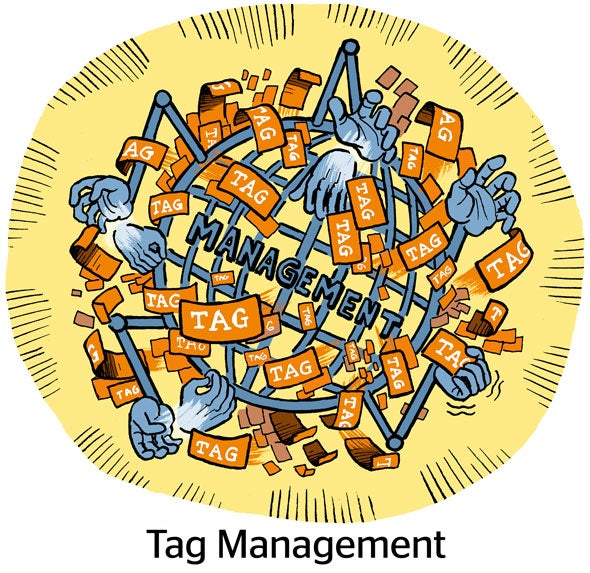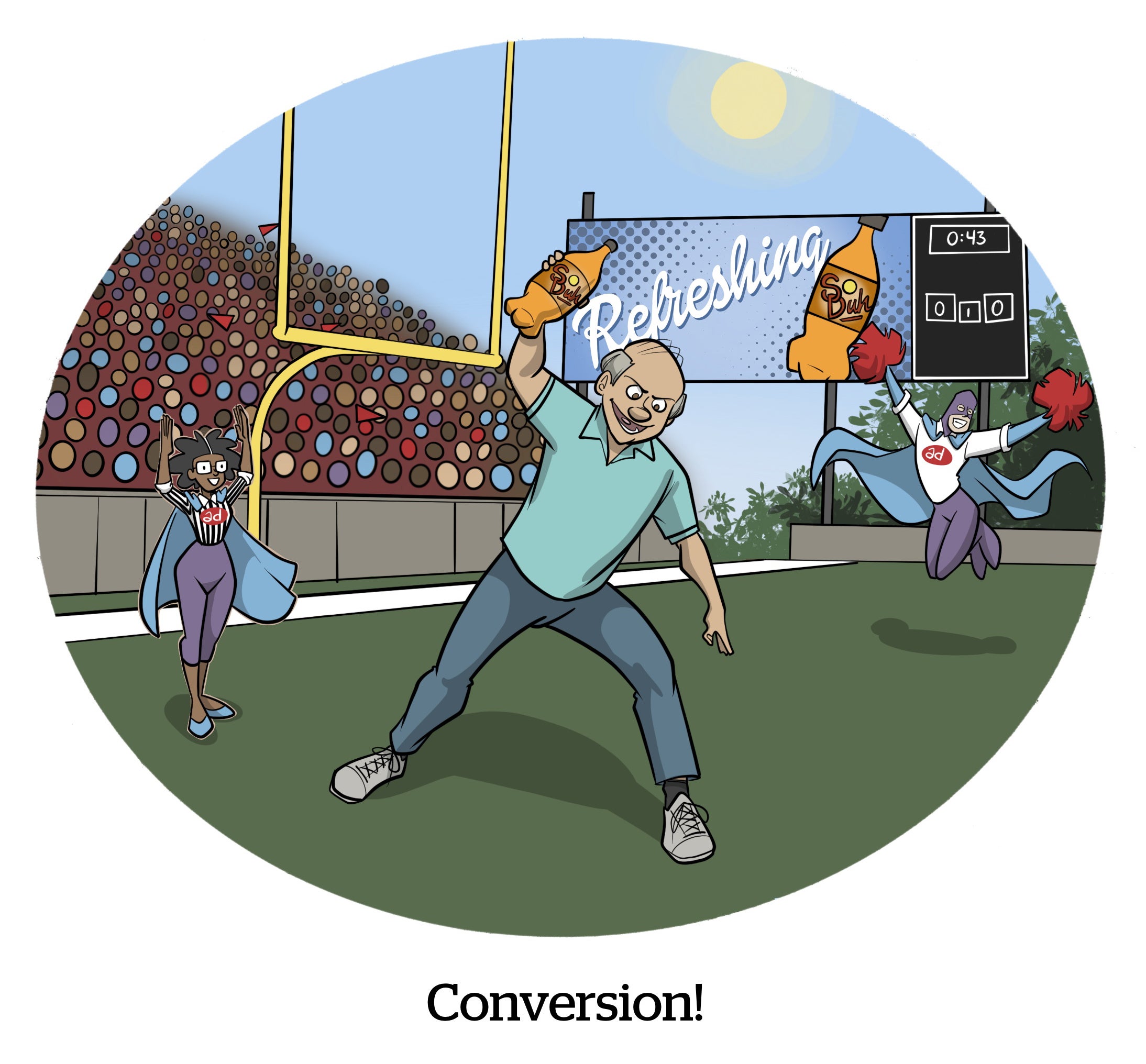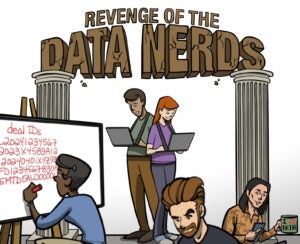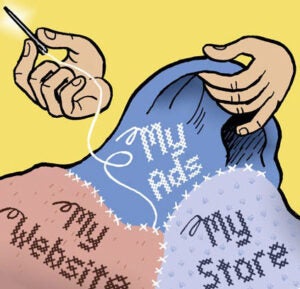You know the old adage “garbage in, garbage out”? Well, it applies to the walled gardens, too, even with all of their access to first-party data.
The big ad platforms have been investing more in end-to-end automated systems for planning, launching and optimizing ad campaigns, but they still need high-quality data inputs to feed those tools.
Conversion APIs (CAPIs) ensure that the walled gardens can load their ad platforms with useful data. Think of CAPIs as the connection point between what customers do and how platforms optimize.
But CAPIs are also useful because they help guide buyers on where to allocate their spending.
In short, over just the past few years, CAPI integrations have moved from a nice-to-have to a necessity for anyone operating within walled garden environments – and now they’re laying the groundwork for a less wasteful, outcomes-driven ad ecosystem.
A foundation for optimization
Basically, a CAPI is a back-end server-to-server process by which an advertising platform logs user actions associated with ad exposures.
If, for instance, a user visits a brand’s landing page after clicking on an ad they saw on a platform, the CAPI logs that action along with details about the ad, like the creative version and the timestamp, plus information about what that user does on the page. This data is then tied to an anonymized identifier.
Agencies now consider CAPI integrations as “foundational” measurement tools for their clients, according to Michael Nicolosi, senior analytics director for the Americas at Brandtech Group-owned agency Jellyfish.
Direct insight into which ad placements are driving conversions “could change how budgets are allocated,” Nicolosi added.
However, the true benefit of CAPIs is having more accurate optimization signals to feed into bidding algorithms, he said.
AdExchanger Daily
Get our editors’ roundup delivered to your inbox every weekday.
Daily Roundup
Take Reddit, for example, which is using its CAPI to power its campaign automation and optimization tools. “To deliver the optimization engine, we need the signals,” said Jyoti Vaidee, Reddit’s VP of ad product management.
The best way to build an ad stack in a world where privacy is key and cookies and mobile IDs are becoming less reliable is to do it via a conversion API integration, she said.
Building buy-side relationships
Instead of relying on third-party cookies or device IDs to enable measurement, CAPI integrations use an advertiser’s first-party data.
But before brands can take advantage, Nicolosi said, they need a way to organize and activate their first-party data, like through a CDP or a CRM solution.
The investment is worth it, though, he said. Some of Jellyfish’s clients have reduced their cost per lead by 30% and improved their ROAS by nearly 10% through bidding optimizations. One client, an educational institution, saw a 130% increase in conversions, according to Nicolosi.
Platforms, meanwhile, have realized that offering CAPI connections is essential for developing closer relationships with brands and agencies.
The Home Depot, for example, saw a 400% boost in incremental ROAS compared to other social platforms when using Reddit’s CAPI and dynamic product ads, and Lenovo saw a 7% increase in purchases and a 19% boost in page visits. Ulta Beauty saw a more than 60% improvement in ROAS on Reddit.
Demonstrable improvements to campaign performance spur advertisers to spend more with a platform, Nicolosi said.
LinkedIn has seen this effect firsthand, too.
Brands that share conversion data via LinkedIn’s CAPI see an average 31% increase in attributed conversions, Jae Oh, director of product management at LinkedIn, told AdExchanger. And CAPI integrations can reduce a brand’s cost per qualified lead by 39% on average, he said.
It’s worth noting that neither LinkedIn nor Reddit charges advertisers to use their respective CAPI.
“It changes the game in terms of how [advertisers] examine ROI coming from the platform,” Oh said, “and leads to growth in their investment if it’s the results they expected.”
Deliberate data sharing
In addition, advertisers can be more deliberate about what conversion data they’re passing back to an ad platform when they use a CAPI.
Because of privacy concerns, brands have become more reluctant to let platforms place a lot of code on their pages to aid attribution, Nicolosi said.
“A typical [tracking] pixel is going to download a bunch of JavaScript that can do whatever it wants,” he said. “In the worst case, it could be malicious, but other times, it can conflict with the code on your site.”
For example, a tracking pixel might overwrite a variable needed by a website to complete a user’s form submission.
However, with a CAPI integration, “you remove all that risk because the operation is happening on the server or in a CRM system,” Nicolosi said.
Having a CAPI has allowed LinkedIn to work with advertisers that had reservations about placing code on their landing pages.
According to Oh, introducing a CAPI had long been a high-priority request among LinkedIn’s customers – especially brands that “were unwilling to install our JavaScript onto their website,” he said, but who felt “a little bit more comfortable about only passing the data [they] care about.”
Having a CAPI has also been instrumental in allowing LinkedIn to work with brands in highly regulated, data-sensitive industries, he said.
Adopt or not?
The benefits of CAPIs aside, not every brand is on board with these integrations.
“There are some customers who won’t do CAPI because they don’t want to share customer data with any third party,” Nicolosi said.
So far, close to half of Jellyfish’s top clients have some version of a CAPI implemented, he said, and it’s taken about two and a half years to get to this point. After an influx of early adopters, however, Jellyfish has recently seen a slowdown in new brands willing to try it, he said.
LinkedIn claims that a “not low double-digit percentage” of its advertisers have adopted its CAPI, but declined to be more specific. Reddit declined to share how many advertisers have adopted its CAPI.
But while CAPI adoption may have plateaued, Nicolosi said, recent advancements in interoperability with data platforms and server-to-server integrations could spur more advertiser interest.
For example, he said, LinkedIn has been proactive in allowing data connections to platforms like Salesforce and Snowflake, and other platforms have followed that lead, he said. Meta introduced its Signals Gateway earlier this year to support conversion data derived from non-Meta platforms, and Google has also been playing nicer with other platforms via its Google Ads Data Manager, which became generally available in 2024.
The next step to increase CAPI adoption would be if demand-side platforms introduced their own CAPIs and made them widely available and broadly interoperable, Nicolosi said. For example, The Trade Desk offers a CAPI, but it’s not easily accessible via common solutions like server-side Google Tag Manager or Tealium EventStream, he said.
In addition to The Trade Desk, Yahoo DSP and Amazon DSP also offer CAPIs. So there’s a trend building.
But advertisers also need more proof of the value of CAPI integrations, particularly since Google reneged on its plans to deprecate third-party cookies in Chrome.
“Lately,” Nicolosi said, “it seems harder to make the case that this is something you should do for future readiness.”
Yet CAPIs are an opportunity to “theoretically go completely cookieless,” he said.
“So if [cookies do] start becoming less reliable,” Nicolosi said, “you can start relying on your actual first-party data.”


















